#include <stdio.h>
#define N 4
int main()
{
int x[N] = {1, 9, 8, 4};
int i;
int *p;
// 方式1:通过数组名和下标遍历输出数组元素
for(i=0; i<N; ++i)
printf("%d", x[i]);
printf("\n");
// 方式2:通过指针变量遍历输出数组元素 (写法1)
for(p=x; p<x+N; ++p)
printf("%d", *p);
printf("\n");
// 方式2:通过指针变量遍历输出数组元素(写法2)
p = x;
for(i=0; i<N; ++i)
printf("%d", *(p+i));
printf("\n");
// 方式2:通过指针变量遍历输出数组元素(写法3)
p = x;
for(i=0; i<N; ++i)
printf("%d", p[i]);
printf("\n");
return 0;
}
![]()
#include <stdio.h>
#define N 4
int main()
{
char x[N] = {'1', '9', '8', '4'};
int i;
char *p;
// 方式1:通过数组名和下标遍历输出数组元素
for(i=0; i<N; ++i)
printf("%c", x[i]);
printf("\n");
// 方式2:通过指针变量遍历输出数组元素 (写法1)
for(p=x; p<x+N; ++p)
printf("%c", *p);
printf("\n");
// 方式2:通过指针变量遍历输出数组元素(写法2)
p = x;
for(i=0; i<N; ++i)
printf("%c", *(p+i));
printf("\n");
// 方式2:通过指针变量遍历输出数组元素(写法3)
p = x;
for(i=0; i<N; ++i)
printf("%c", p[i]);
printf("\n");
return 0;
}
![]()
1.2004
2.2001
第一个源码中指针指向的是整型变量,占用4个字节,第二个源码中指针指向的是字符型变量,只占用一个字节
#include <stdio.h>
int main()
{
int x[2][4] = { {1,9,8,4}, {2,0,2,2}} ;
int i, j;
int *p; // 指针变量,存放int类型数据的地址
int (*q)[4]; // 指针变量,指向包含4个int型元素的一维数组
// 使用数组名、下标访问二维数组元素
for(i=0; i<2; ++i)
{
for(j=0; j<4; ++j)
printf("%d", x[i][j]);
printf("\n");
}
// 使用指针变量p间接访问二维数组元素
for(p = &x[0][0], i = 0; p < &x[0][0] + 8; ++p, ++i)
{
printf("%d", *p);
if( (i+1)%4 == 0)
printf("\n");
}
// 使用指针变量q间接访问二维数组元素
for(q=x; q<x+2; ++q)
{
for(j=0; j<4; ++j)
printf("%d", *(*q+j));
printf("\n");
}
return 0;
}
![]()
#include <stdio.h>
int main()
{
char x[2][4] = { {'1', '9', '8', '4'}, {'2', '0', '2', '2'} };
int i, j;
char *p; // 指针变量,存放char类型数据的地址
char (*q)[4]; // 指针变量,指向包含4个char型元素的一维数组
// 使用数组名、下标访问二维数组元素
for(i=0; i<2; ++i)
{
for(j=0; j<4; ++j)
printf("%c", x[i][j]);
printf("\n");
}
// 使用指针变量p间接访问二维数组元素
for(p = &x[0][0], i = 0; p < &x[0][0] + 8; ++p, ++i)
{
printf("%c", *p);
if( (i+1)%4 == 0)
printf("\n");
}
// 使用指针变量q间接访问二维数组元素
for(q=x; q<x+2; ++q)
{
for(j=0; j<4; ++j)
printf("%c", *(*q+j));
printf("\n");
}
return 0;
}
![]()
1.2004
2.2016
因为在第一个源码中p代表的是二位数组的元素的具体地址,p每增加一次前进4个字节,在第二个源码当中p代表的是二位数组的行地址,每增加一次前进16个字节。
#include <stdio.h>
#include <string.h>
#define N 80
int main()
{
char s1[] = "C, I love u.";
char s2[] = "C, I hate u.";
char tmp[N];
printf("sizeof(s1) vs. strlen(s1): \n");
printf("sizeof(s1) = %d\n", sizeof(s1));
printf("strlen(s1) = %d\n", strlen(s1));
printf("\nbefore swap: \n");
printf("s1: %s\n", s1);
printf("s2: %s\n", s2);
printf("\nswapping...\n");
strcpy(tmp, s1);
strcpy(s1, s2);
strcpy(s2, tmp);
printf("\nafter swap: \n");
printf("s1: %s\n", s1);
printf("s2: %s\n", s2);
return 0;
}
![]()
1.13,size of 计算的是s1所占用的空间大小,strlen则是计算字符串的长度。
2.不可以,上述代码不符合字符串的定义要求
3.是的
#include <stdio.h>
#include <string.h>
#define N 80
int main()
{
char *s1 = "C, I love u.";
char *s2 = "C, I hate u.";
char *tmp;
printf("sizeof(s1) vs. strlen(s1): \n");
printf("sizeof(s1) = %d\n", sizeof(s1));
printf("strlen(s1) = %d\n", strlen(s1));
printf("\nbefore swap: \n");
printf("s1: %s\n", s1);
printf("s2: %s\n", s2);
printf("\nswapping...\n");
tmp = s1;
s1 = s2;
s2 = tmp;
printf("\nafter swap: \n");
printf("s1: %s\n", s1);
printf("s2: %s\n", s2);
return 0;
}
![]()
1.存放字符串的起始地址
size of表示存放字符串起始地址所占用的空间,strlen表示的是字符串的长度。
2.不可以,s1是指针型变量存放的地址而非字符串。
3。交换的是s1和s2两指正变量所存放的字符串起始地址,两字符串在内存储单元并没有进行交换。
#include <stdio.h>
#include <string.h>
#define N 5
int check_id(char *str); // 函数声明
int main()
{
char *pid[N] = {"31010120000721656X",
"330106199609203301",
"53010220051126571",
"510104199211197977",
"53010220051126133Y"};
int i;
for(i=0; i<N; ++i)
if( check_id(pid[i]) ) // 函数调用
printf("%s\tTrue\n", pid[i]);
else
printf("%s\tFalse\n", pid[i]);
return 0;
}
// 函数定义
// 功能: 检查指针str指向的身份证号码串形式上是否合法。
// 形式合法,返回1,否则,返回0
int check_id(char *str)
{
// 补足函数实现
if(strlen(str)==18)
{
char a[19];
strcpy(a,str);
if(a[17]=='0'||a[17]=='1'||a[17]=='2'||a[17]=='3'||a[17]=='4'||a[17]=='5'||a[17]=='6'||a[17]=='7'||a[17]=='8'||a[17]=='9'||a[17]=='X')
return 1;
else
return 0;
}
else return 0;
// ×××
}
![]()
#include <stdio.h>
#include <string.h>
#include<malloc.h>
#define N 80
int is_palindrome(char* s); // 函数声明
int main()
{
char str[N];
int flag;
printf("Enter a string:\n");
gets(str);
flag = is_palindrome(str); // 函数调用
if (flag)
printf("YES\n");
else
printf("NO\n");
return 0;
}
// 函数定义
// 功能:判断s指向的字符串是否是回文串
// 如果是,返回1;否则,返回0
int is_palindrome(char* s)
{
// 补足函数实现
int len,i;
len = strlen(s);
for (i = 0; i <= len; i++)
{
if (s[i] != s[len-1 - i])
break;
}
if (i == len )
return 1;
else
return 0;
// ×××
}
![]()
#include <stdio.h>
#define N 80
void encoder(char* s); // 函数声明
void decoder(char* s); // 函数声明
int main()
{
char words[N];
printf("输入英文文本: ");
gets(words);
printf("编码后的英文文本: ");
encoder(words); // 函数调用
printf("%s\n", words);
printf("对编码后的英文文本解码: ");
decoder(words); // 函数调用
printf("%s\n", words);
return 0;
}
/*函数定义
功能:对s指向的字符串进行编码处理
编码规则:
对于a~z或A~Z之间的字母字符,用其后的字符替换; 其中,z用a替换,Z用A替换
其它非字母字符,保持不变
*/
void encoder(char* s)
{
// 补足函数实现
int i = 0;
while (s[i] != '\0')
{
if ((s[i]>'a'&&s[i]<'z')||(s[i]>'A'&&s[i]<'Z'))
s[i]+=1;
if (s[i] == 'z')
s[i] = 'a';
if (s[i] == 'A')
s[i] = 'Z';
if (s[i] == 'Z')
s[i] = 'A';
if (s[i] == 'a')
s[i] = 'z';
i++;
}
// ×××
}
/*函数定义
功能:对s指向的字符串进行解码处理
解码规则:
对于a~z或A~Z之间的字母字符,用其前面的字符替换; 其中,a用z替换,A用Z替换
其它非字母字符,保持不变
*/
void decoder(char* s)
{
// 补足函数实现
int i = 0;
while (s[i] != '\0')
{
if ((s[i] > 'a' && s[i] < 'z') || (s[i] > 'A' && s[i] < 'Z'))
s[i] -= 1;
else
if (s[i] == 'z')
s[i] = 'a';
else if (s[i] == 'A')
s[i] = 'Z';
else if (s[i] == 'Z')
s[i] = 'A';
else if (s[i] == 'a')
s[i] = 'z';
i++;
}
// ×××
}
![]()
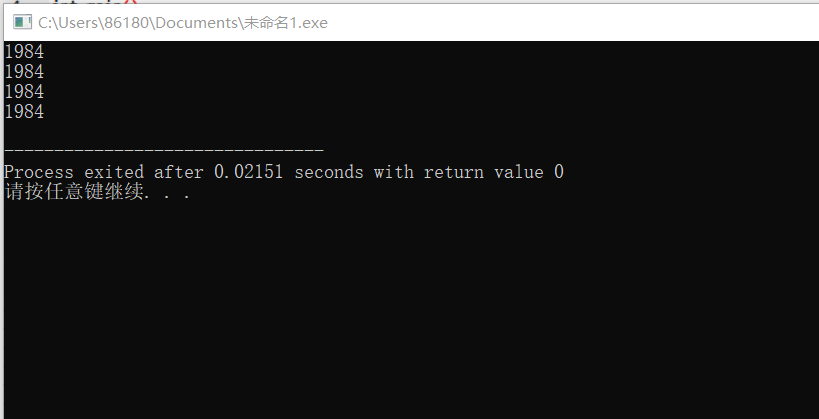
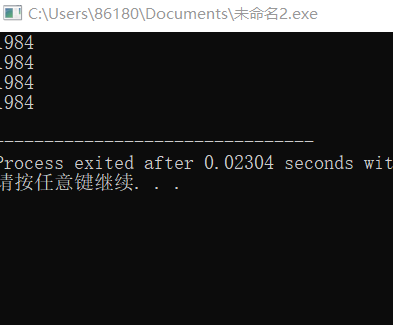
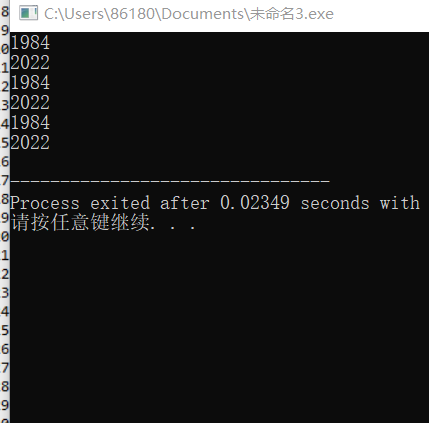
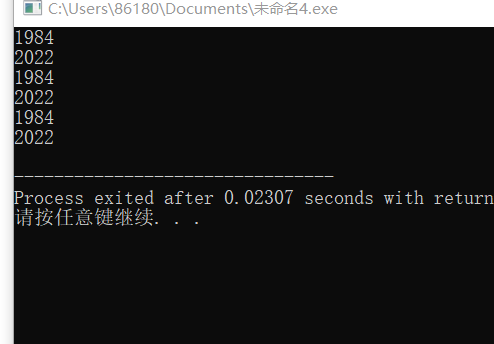
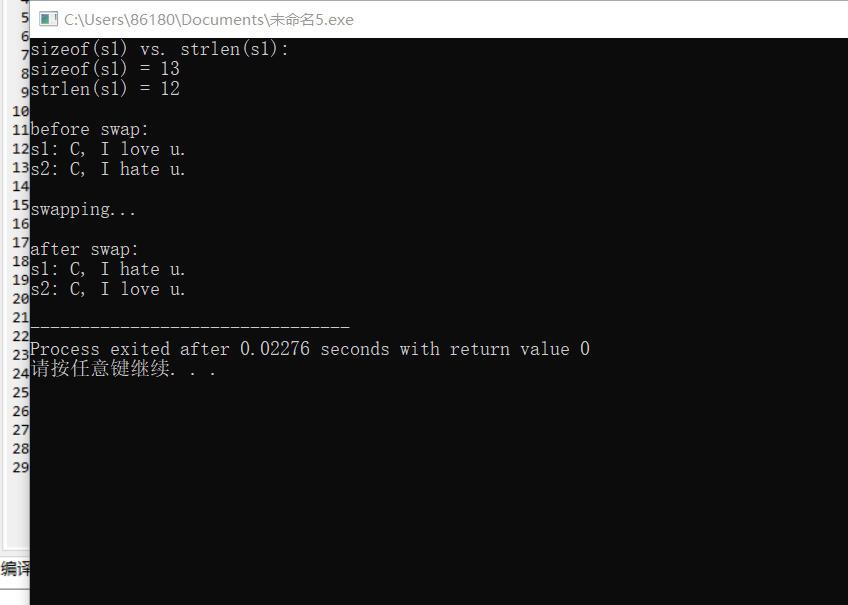
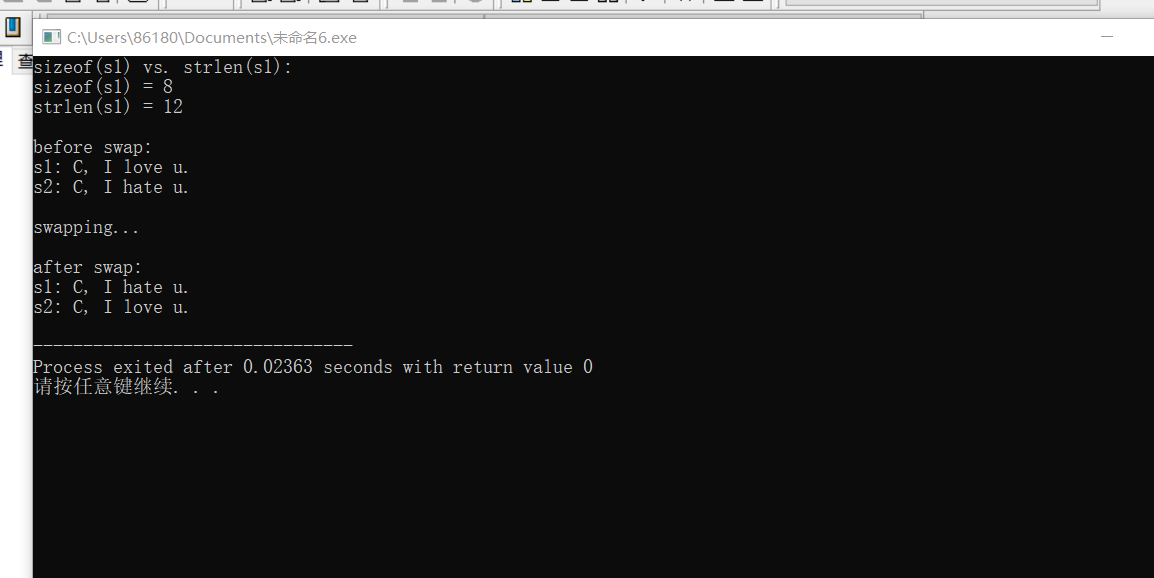
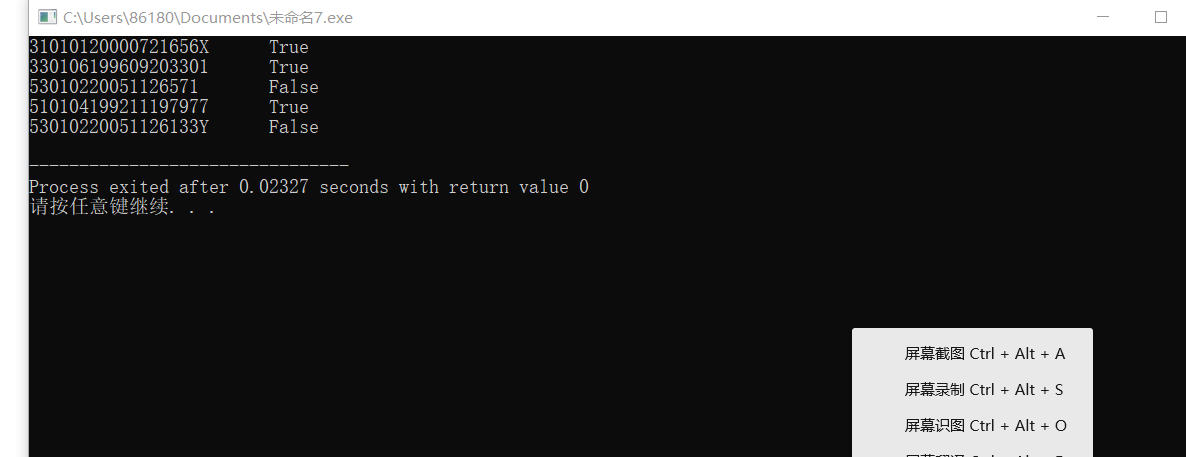

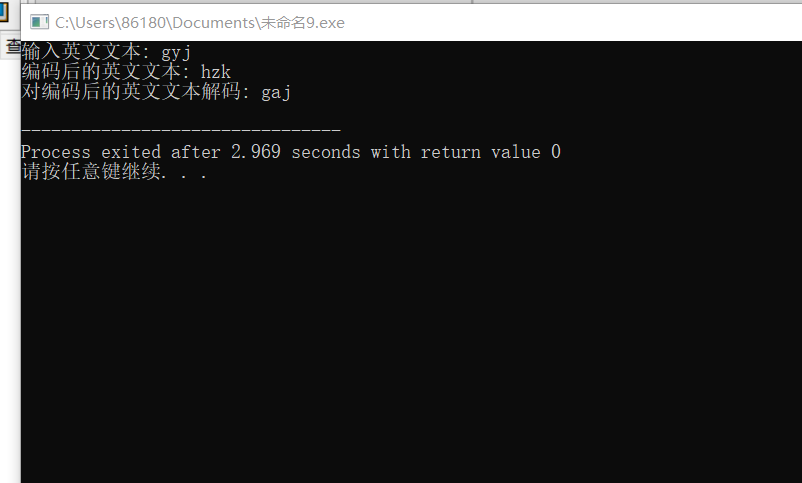


 浙公网安备 33010602011771号
浙公网安备 33010602011771号